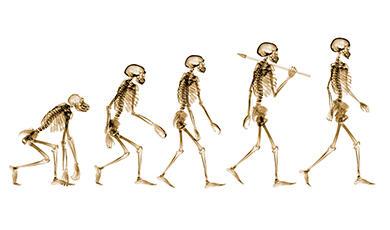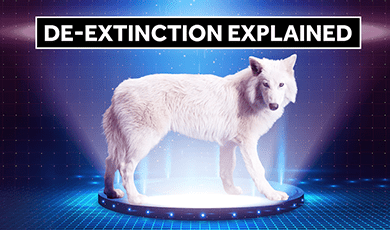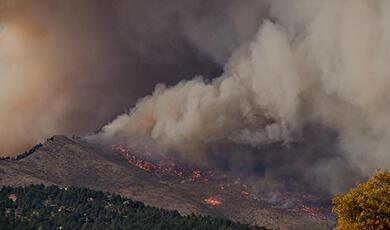Going Viral: An Environmental Activist's Story
Share
- Details
- Text
- Audio
- Downloads
- Extra Reading
Dr Nathan Robinson’s video of him removing a plastic drinking straw from a sea turtle’s nose went viral in 2015. He has since been developing new ways of using technology to gain insights into the secret lives of marine creatures, including capturing the first footage of a live giant squid in US waters and mounting cameras on shells of sea turtles.
This lecture will give a practical guide to building viral science stories to bring about environmental change.
Download Text
Going Viral:
An Environmental Activist’s Story
Dr Nathan Robinson
29th March 2022
I am here to tell you a story. This story covers how a chance encounter enabled me to connect with hundreds of millions of people around the globe and impassion them to join the fight against plastic pollution - an issue that currently threatens the health of all marine life on this planet. I will also share how this set me down a path of using social media and viral videos to engage ever larger audiences in ocean conservation. By telling you this story, I hope to impart some of the lessons that I learned on this journey. I also want to show you that you already have the necessary tools at your fingertips to start enacting global behavioural change today.
My story begins when as kid, I was obsessed with nature. In fact, my Mum often tells me instead of bed-time stories, I used to ask her to read to me from an old, tattered animal encyclopaedia that I used to carry around with me like a cuddly toy. To me, the natural world exemplified something more fascinating than anything than could be dreamed up in a work of fiction. It therefore made sense that as I teenager, I found myself hooked on nature documentaries. And the more I watched, the more I learned two things. One, our oceans were under threat and two, I wanted to do something about it.
My next step was rather predictable, I went to university to study marine biology. My expectation was that upon starting my degree, I would be ushered into a world of rescuing whales, dolphins, and other imperilled critters but the reality was a little more mundane. My professors were deeply knowledgeable about the issues facing our ocean, but we learned almost nothing about what to do about it. I found this feeling very frustrating and so I decided to take a different path and began volunteering.
I decided to volunteer for Archelon – the sea turtle protection society of Greece. Here, my expectations met reality. We would spend our days patrolling endless beaches looking for the tracks in the sand from nesting sea turtles. When we found a track, we would dig until we confirm that exact location of the eggs, before setting up a protective cover to guard the eggs until they hatched a few months later. Through every protected nest, I would feel that I was having a direct impact on ocean conservation, and I loved it. Luckily, my enthusiasm was also picked up by supervisors who quickly offered me a paid job for the next season.
After several summers spent with Archelon, I eventually was offered a similar job in Costa Rica. This then led to a Ph.D that had me bouncing between the USA, the Caribbean, and South Africa. Finally, I returned to Costa Rica again as a post-doc. I was living my dream of being a marine biologists and conservationist but something else weighed on my mind. Regardless of how many sea turtle nests were protected by me or the thousands of other people working with sea turtles worldwide, in most areas the trends were the same; sea turtle population were in decline. In fact, at Parque Nacional Marine Las Baulas in Costa Rica, the location that I had spent 8 years of my life, sea turtle populations had been declining by a rate of about 20 % per year since monitoring began in the late 1980s. This site was once that largest recorded nesting beach for the leatherback turtles. Last year, only 2 turtles nested there.
These reasons behind declining sea turtle populations in many locations worldwide had already been largely figured out long before I had even begun my life in conservation. Hundreds of thousands of sea turtles were dying annually after being caught accidentally by commercial fisheries, others were choking on the marine plastic debris that was continually emptying into our oceans, and countless eggs were literally cooking in their nests as climate change raised beach temperature beyond survivable limits. Unfortunately, none of these issues could be fixed by guarding nests as I had been doing and on top of this, these problems were global issues and so could not be addressed via local initiatives. Fishing fleets are driven by global economic and political processes, plastic pollution enters the ocean from every country on this planet, and we all contribute to CO2 production every time we drive a car or eat imported food.
To truly fix these issues requires global collaboration but there is also a lot of individual responsibility as each of us can play a role in our daily decisions such as eating sustainable seafood, recycling more, or driving less. So, to compliment by work on nesting beaches, I also began to organize various outreach campaigns. I gave talks in public forums, schools, universities, hotels, and basically anywhere where people would listen. However, I discovered a more effective way to reach far larger audiences thanks to a chance encounter in 2015.
I had been invited to join a research expedition off the Pacific coast of Costa Rica. The expedition was being run by a good friend, Christine Figgener from Texas A&M university, to collect tissue samples from olive ridley sea turtles for genetic analyses. As collecting these samples required us handle the turtle directly, I decided to also use this opportunity continue one of my own studies on sea turtle epibionts. Epibionts are the animals, such as barnacles, crabs, and leeches, that live on the bodies of larger marine organisms, such as sea turtles. These epibionts can be very interesting animals themselves but importantly they can also reveal information about health, behaviour, and movements of their sea turtle host. In turn, this information can be used to develop improve management plans for sea turtle conservation. So, every time we brought sea turtle onboard the boat, I would scour over them to study their epibiont hitchhikers. On one notable animal, we found something we had never seen before. The turtle appeared to have something lodged in its nostril. I initially thought it was a tubeworm, a worm-like animal with an encrusting shell, but as it was clearly blocking the turtle’s airway I decided to jump into action. I reached for my pocket tool while Chris grabbed her camera. Here, is the video that she recorded. The following video can be a little disturbing and so viewer discretion is advice.
Much to our surprise, the object was not a tubeworm; it was a plastic drinking straw. I wish I could say that this was a one-off event, but two months later lightning struck again.
We were working at another research site about 50 kilometres away from the first site and were once again collecting epibionts. When we found another animal with something in its nose, I once again grabbed my pocket tool while a different friend, Sean Williamson, grabbed his camera. Here, it that video that he recorded.
This it was not a plastic straw, but a plastic fork.
After both encounters, my first feeling was one of guilt. I had used countless plastic straws and forks in my life, and I so felt part responsible for what I had witnessed. I also wondered how these objects found their way into those turtles’ nostrils? They could not have been forced in from the outside as the head of fork was too large and so I concluded turtles were accidentally eating plastic items and them attempting to regurgitate them later. Unfortunately, for some animals, the plastic item was not being passed out of the mouth but was getting stuck into the internal nares, which is the channel that connects your external nostrils to your throat and can be seen in the X-ray shown. For anyone looking for an analogy, it is like what happens when you laugh when drinking and the liquid is expelled out of your nose!
Even though it was well known that sea turtles are frequently eating plastic debris in the ocean, no one had previously reported that plastic items were also becoming wedged into turtle’s nostrils. So, I did what most scientists would do and I wrote up two short scientific articles describing these events and published them the a peer-reviewed journal: Marine Turtle Newsletter. Recently, I looked up the first of these articles a platform called ResearchGate and I could see that it had been downloaded a few thousand times. Not bad for a scientific article but hardly world changing. Yet when I posted the original photos and videos on social media alongside a quick call to action about the impact of marine plastic pollution, the impact was quite different.
This was the Facebook post I made when I first shared the images from the share video. As you can see it was eventually shared over 32,000 times. When compared with my posts from the fork video, the shares exceed 60,000. These videos have also now received over 220,000,000 views on YouTube, were picked up by an array of international news sources, inspired several anti-single use plastic campaigns, and were the focus of a full-length film, somewhat predictably, Straws.
Or perhaps the most modern measure of cultural impact is the quantity of memes it produced, and for this I will just say “a lot”.
The impact of these videos was clear. A global conversation had begun regarding our use of single-use plastics and before long coffee shops, restaurants, provinces, and eventually entire countries were calling for bans on single-use plastic and especially straws, often stating directly that it was “for the turtles!”
Seeing the impact of these videos, I wondered how I could continue to incorporate this strategy of using online videos for outreach into my own research as a Marine Biologist. So, I decided to start developing new research projects that would be based around camera technologies. This way I could simultaneously generate footage that could answer important ecological questions while also be used as a platform for conducting “viral” environmental outreach.
For the next section of my talk, I will give a quick introduction three of these projects and their successes. The first of these projects involves using cameras attached to drones, the second will be cameras mounted directly on the animals of interest (or animal-borne cameras), and lastly cameras that we are deploying into the deep-sea.
Starting with drones, which are often more accurately called Unoccupied Aerial Vehicles, these devices have led to something of a mini revolution in the field of ecology in the past decade. As small drones became commercially available at a relatively affordable price, ecologists were able to use them to study wildlife from an aerial viewpoint that could only previously be achieved using helicopters of low-flying aircraft. This has been particularly useful for people working in shallow-water or coastal habitats as it provides a new method to quickly count the number of individuals in a particular habitat or to study their behaviour without disturbing them. Next, I wish to share with you a couple of my favourite clips from these projects.
We have published some great scientific articles from this work and received coverage from National Geographic and a couple of British newspapers, but nothing on the scale that we were aiming for. So, for the next project we aimed to get take a brand-new perspective. Specifically, a first-person perspective of the animals that we were studying.
Animal-borne cameras can be thoughts of like GoPro head mounts for the animal kingdom. Several researchers had been deploying similar cameras for many years but typically they were deployed by scientists for the primary goal of science. For this reason, it might be critically important that you film in the highest resolution, and you might prioritize recording for longer over the quality of your footage. We took a more image-centric approach and decided to use high-quality diving cameras that could record crisp, 4k footage and we developed a simple method for quickly mounting these cameras onto the shells of sea turtles in The Bahamas. We picked sea turtles as we knew that they were charismatic and engaging animals but instead of focusing on the threats that these animals face, we wanted to share a more positive message. So, instead we decided to focus our study on the sea turtles of The Bahamas as these habitats were relatively pristine and had minimal impact from pollution, boat traffic, or habitat development. We wanted to show the world exactly how beautiful it could be to swim through the oceans like a sea turtle.
As mentioned earlier though, the goal was to compliment engaging footage with real scientific questions, and there is a lot that you can do with footage from animal-borne cameras. Knowing how a sea turtle sees and interacts with the world around it, can provide insights into what they eat, how they find food, how the find shelter, and even how turtles interact with each other? In fact, learning that sea turtles are surprising social was one of the key discoveries of this project. It was generally accepted that sea turtles, even when forming large aggregations in their feeding habitats, were not typically social animals and rarely interacted. However, our animal-borne camera footage showed that turtles would almost never swim past another turtle without some form of interaction. Sometimes these interactions were clearly aggressive and may reflect territorial behaviour, but we also recorded plenty of non-aggressive interactions, such as gentle head rubbing. Seeing as these turtles were all juvenile and not reproductively active, we are still trying to figure out the mystery of this behaviour. Maybe, if I show you some of this footage, you can come up with your hypotheses.
We are currently still writing up the peer-reviewed articles from this project, but the media coverage has been great. We have been featured in several newspapers and online media channels including CNN, Great Big Story, 60 Second Documents, and OceanX. A clear step forward in engaging with global audiences.
For my final project, I will take us away from the waters of the tropics and head somewhere far picturesque – the deep sea. Many of us rarely think about the deep sea but it’s a lot more important than we often think. Over 70 % of the world’s surface covered by water and 93 %, or the area highlighted in orange is below, 200 m. This makes the deep-sea one of the largest habitats on this planet and far bigger than any single terrestrial ecosystem. Nevertheless, it also remains one of the least studied habitats on this planet and an arguable over-used fact is that we have more detailed maps of the surface of the moon than we do of the bottom of the ocean.
There are a few key reasons that make deep-sea exploration particularly challenging. Firstly, while the deepest depth that a human can dive is a few hundreds of meters, the ocean can reach depths of over 11,000m. Moreover, with every meter you descend, the external pressure increases. In other words, you become slowly crushed by the weight of the water above you. As pressure increases at a rate of one atmosphere per 10 meters, with one atmosphere being the pressure you feel at the surface, this will have already increased 20 times by the time you reach 20 meters. Exploring the deep therefore requires the use of expensive technology such as submarines, submersibles, or Remotely Operated Vehicles (ROVs).
Another key issue is that the deeper you go, the less sunlight penetrates from the surface. Below depths of around 200 m, the amount of light penetrating from the surface is so low that we can barely see anything with the human eye. We therefore tend to attach bright white lights onto the front of our submarines or ROVs to explore pierce through the inky darkness around us. But just because we need extra light to see at these depths that is not necessarily the case from the natural inhabitants of these depths, many of which have evolved incredibly low-light sensitive eyesight. Consequently, it is possible many species that live in the deep sea can see our artificial lights from far away and flee far before they are close enough for us to see.
One of the first scientists to ponder this dilemma was Dr. Edith Widder, who decided to build a “stealth” camera platform to record the behaviour of ever the most camera-shy deep-sea fauna. This camera, which was called the Medusa, used a low-light sensitive camera with far red illuminators instead of white ones. This was important as Edith’s own research had shown that many deep-sea species did not see light of the colour red. Unlike a submarine or submersible, the Medusa also had no moving parts and so it was completely silent. This gave Edith a device that deep-sea organisms could not see or hear but she still needed a method to draw animals in close. For this, she developed a device called an E-Jelly that had a circle of blue LEDs that emitted this light in a pin-wheel display. These lights mimicked the bioluminescent display of a deep-sea jellyfish, a common prey items in these habitats. You see the key was not to get rid of all light, just to use light in a slightly clearer way.
Edith had already built the device, but she needed someone with a background in underwater filming to help her deploy it on an expedition in the Gulf of Mexico, and I jumped at the opportunity. On this expedition, we filmed everything from deep-sea sharks to shrimp that would spew bright neon blue jets of bioluminescence, but one species in particular left us speechless. We filmed a species that is it a true cultural icon. This species is so captivating that it has featured in everything from Norse mythology to modern-day blockbusters. The species is commonly called the “Kraken”, but its scientific name is the giant squid. For all its fame it has only been filmed alive once before in the waters of Japan. What you are about to see if the second ever clip of this species and the first to be filmed in US waters.
This revealed some new information about the hunting behaviour of giant squid that we published last year. It was also immediately picked up by one the largest newspapers in the world, the New York Times and over 400 other international media sources. Suddenly, the deep sea, a habitat that generally most people never even think about was being discussed worldwide.
For the final section of my talk, I will try to synthesize this information into five lessons that I have learnt on my journey in science communication.
First, and most importantly, “Global Outreach Needs Global Communication”. Another way of saying this is that science shared in a bubble, stays within that bubble. As scientists, we tend to not be great at engaging with non-scientific audiences. However, unless we attempt to bridge this gap, we are stunting the potential impact of our research. There are now so many platforms that scientists can use to share their research outside of non-peer reviewed journals, including press releases, social media, blog posts, podcast, and more. Using these platforms, we provide a bridge that is the first step towards going viral and reaching the largest possible audience.
Second, “Emotional Connection Promotes Engagement”. Science is commonly communicated in terms of statistics and facts. While we always need to keep facts central to science communication, we also need to recognize that emotional connection provides the necessary engagement to communicate these facts. For example, try telling someone this quote from an article in the journal Science “We calculate that 275 million metric tons of plastic waste was generate in 192 coastal countries in 2010, with 4.8 to 12.7 million metric tons entering the ocean”. This quote is scary, but it is difficult to visualize or connect with emotional. Instead, try sharing the straw video and then use this as a platform to say that this was the impact of one straw from that potential 12.7 million metric tons of plastic waste that entered the ocean in 2010. For many people, the second option helped build the emotional connection that allowed them to engage the original fact that was presented. Another example is the giant squid video. The giant squid is a great platform to engage people in conversations about the deep sea and specifically why conserving deep-sea habitats is so important.
Third, “Positivity Is As Powerful As Negativity”. With stories on ecological disasters growing each year, it is easy to focus on the negative. Such stories can be very impactful, and the straw video shows the power of a difficult-to-watch imagery, but we need to be careful of “Apocalypse Fatigue”. If we only share negative information, we run the risk to turning people off and loosing engagement. So, it’s important to remember that positive and awe-inspiring imagery such as that from the animal-borne cameras of the giant squid can be just as engaging and help spread a bit of positivity about the natural environment.
Fourth, “Promote Individual Action”. The key to the success of the straw video was that there was an easy solution that we could easily identify and take part it. Removing straws from our lives was relatively easy for most of us and even if it was only a tiny faction towards addressing the global issue of marine plastic pollution, it was at least a step in the right direction. In contrast, the animal-borne camera videos or the giant squid have been arguably as viral but it’s harder to identify specific behavioural changes that have resulted from these videos. This does not mean that the awe provide by these videos may not have indirect effects on engaging people with more eco-friendly living but it’s clear to see that promoting individual action is key to really seeing that change.
Five, “You Have Everything You Need”. My story today has focused on sharing stories recorded from remote corners of the planet and using state-of-the-art technology, but I want to end by saying that it does not have to be this way. Almost everyone listening to this talk now has a smart phone and direct access to any social media platform of their choosing. This technology has given us the power to tell the stories that are important to use and share them on a global platform. You already have what you need. The only remaining question how you will use your story to change the world?
© Dr Nathan Robinson, 2022
Further Reading
- Robinson NJ, Figgener C (2015) Plastic straw found inside the nostril of an olive ridley sea turtle. Marine Turtle Newsletter 147:5-6.
- Robinson NJ, Dornfeld TC, Butler BO, Domico LJ, Hertz CR, McKenna LN, Neilson CB, Williamson SA (2016) Plastic fork found inside the nostril of an olive ridley sea turtle. Marine Turtle Newsletter 150:1-Robinson NJ, Figgener C, Gatto C, Lazo-Wasem EA, Paladino FV, Santidrián Tomillo P, Zardus JD, Pinou T (2017) Assessing potential limitations when characterising the epibiota of marine megafauna: effect of gender, sampling location, and inter-annual variation on the epibiont communities of olive ridley sea turtles. Journal of Experimental Marine Biology and Ecology 497:71-7.
- Farlow JO, Robinson NJ, Turner ML, Black J, Gatesy SM (2018) Footfall pattern of a bottom-walking crocodile (Crocodylus acutus). Palaios 33:406-13.
- Robinson NJ, Bigelow WF, Cuffley J, Gary M, Hoefer S, Mills S, Smith A, Miguel Blanco A (2020) Validating the use of drones for monitoring the abundance and behaviour of juvenile green sea turtles in mangrove creeks in The Bahamas. Testudo 9: 24-35.
- Robinson NJ, Johnsen S, Brooks A, Frey L, Judkins H, Vecchione M, Widder E (2021) Studying the swift, smart, and shy: unobtrusive camera-platforms for observing large deep-sea squid. Deep-Sea Research I 172:103538.
- Life Through The Eyes of a Sea Turtle - Mission Wild: https://youtu.be/JxvhFX4S1A0
- Giant Squid Spotted In US Waters - OceanX - https://youtu.be/dqLLiNxxKUI
- The Most Famous Straw in the World - OceanX - https://youtu.be/suPt9SGXG34
- Filming Giant Squid and Saving Sea Turtles - The Morning Show - https://youtu.be/Q6tR1bM4IM8
Further Reading
- Robinson NJ, Figgener C (2015) Plastic straw found inside the nostril of an olive ridley sea turtle. Marine Turtle Newsletter 147:5-6.
- Robinson NJ, Dornfeld TC, Butler BO, Domico LJ, Hertz CR, McKenna LN, Neilson CB, Williamson SA (2016) Plastic fork found inside the nostril of an olive ridley sea turtle. Marine Turtle Newsletter 150:1-Robinson NJ, Figgener C, Gatto C, Lazo-Wasem EA, Paladino FV, Santidrián Tomillo P, Zardus JD, Pinou T (2017) Assessing potential limitations when characterising the epibiota of marine megafauna: effect of gender, sampling location, and inter-annual variation on the epibiont communities of olive ridley sea turtles. Journal of Experimental Marine Biology and Ecology 497:71-7.
- Farlow JO, Robinson NJ, Turner ML, Black J, Gatesy SM (2018) Footfall pattern of a bottom-walking crocodile (Crocodylus acutus). Palaios 33:406-13.
- Robinson NJ, Bigelow WF, Cuffley J, Gary M, Hoefer S, Mills S, Smith A, Miguel Blanco A (2020) Validating the use of drones for monitoring the abundance and behaviour of juvenile green sea turtles in mangrove creeks in The Bahamas. Testudo 9: 24-35.
- Robinson NJ, Johnsen S, Brooks A, Frey L, Judkins H, Vecchione M, Widder E (2021) Studying the swift, smart, and shy: unobtrusive camera-platforms for observing large deep-sea squid. Deep-Sea Research I 172:103538.
- Life Through The Eyes of a Sea Turtle - Mission Wild: https://youtu.be/JxvhFX4S1A0
- Giant Squid Spotted In US Waters - OceanX - https://youtu.be/dqLLiNxxKUI
- The Most Famous Straw in the World - OceanX - https://youtu.be/suPt9SGXG34
- Filming Giant Squid and Saving Sea Turtles - The Morning Show - https://youtu.be/Q6tR1bM4IM8
This event was on Tue, 29 Mar 2022
Support Gresham
Gresham College has offered an outstanding education to the public free of charge for over 400 years. Today, Gresham College plays an important role in fostering a love of learning and a greater understanding of ourselves and the world around us. Your donation will help to widen our reach and to broaden our audience, allowing more people to benefit from a high-quality education from some of the brightest minds.


 Login
Login







